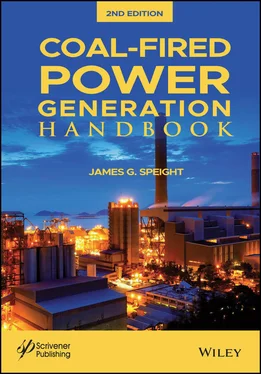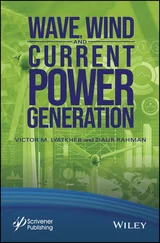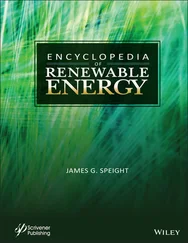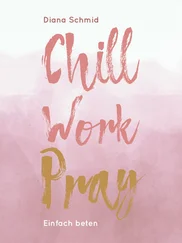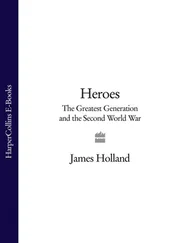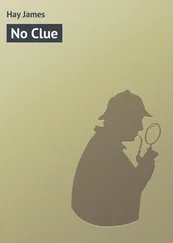In general, surface mining has many advantages compared to underground mining. In general, coal recovery is high (85 to 90%+ w/w of the available coal), compared to 40 to 70% w/w of the available coal in underground seams. Also, health and safety statistics for surface mining are also generally better than those of underground mining. Surface-mined coal from the Powder River Basin (Wyoming) is usually simply sized and screened in preparation for market, whereas underground-mined coal and surface-mined coal from the Interior and Appalachian basins often requires a greater amount of processing (see below) to improve its marketability. The cost per ton of mining coal by surface methods is generally lower than that by underground methods.
Strip mining is a method of coal recovery in which the coal seam is exposed by removing the overburden (the earth above the coal seam) in long cuts or strips. The soil from the first strip is deposited in an area outside the planned mining area. Spoil from subsequent cuts is deposited as fill in the previous cut after coal has been removed.
Although certain coal deposits can be strip-mined without the use of explosives, some means of breaking the overburden is often necessary. This is usually accomplished by drilling horizontal or vertical blast holes (up to 14 inches in diameter) into the overburden whereupon explosive charges are employed to break the rock fragments for subsequent easy removal. This latter part of the operation can be achieved either by the use of a dragline, power shovel, excavators, bucket wheels, and trucks (Speight, 2013).
The overburden is then removed to a previously mined (and now empty) strip. When all the overburden is removed, the underlying coal seam will be exposed. The exposed coal (usually referred to as a block of coal ) may be drilled and blasted (if hard) or otherwise loaded onto trucks or conveyors for transport to the coal preparation (or wash) plant. Once this strip is empty of coal, the process is repeated with a new strip being created next to it. This method is most suitable for areas with flat terrain.
The removed overburden ( spoil ) may, at some future time, be returned to the mined out areas and, in fact, legislators in the various countries where strip mining is in operation are seriously considering the passage of laws relating to the return of mine spoil to mined out areas so that the land can be restored for future productivity. On the other hand, caution is advised for such ventures since there are also laws which prohibit the “injection” or “burial” of any material that is not indigenous to the particular formations. Whilst mine spoil might be cited as being indigenous to the geologic formation from which it came, the effects of weathering (oxidation) and the interaction with acid materials (acid rain) must be given considerations and the extent of any chemical changes should be determined prior to return to the ground. It only takes one failure, or adverse environmental effect, to doom a concept to extinction.
The characteristic that distinguishes this type of mine is essentially the thickness of the coal seam insofar as it is virtually impossible to backfill the immediate mined out area with the original overburden when extremely thick seams of coal are involved. Thus, the coal is removed either by taking the entire seam down to the seam basement (i.e., floor of the mine) or by benching. This latter technique involves the staged mining of the coal seam and has been employed with considerable success not only in many coal mines but also for the mining of the Athabasca oil sand deposits in northern Alberta (Canada), where the tar sand pay zone (ore body) may be some 200 feet (60 m) deep (Speight, 1990, 2013, 2020). If, however, significant parting exists on the floor of the mine from where the coal has recently been removed, this immediate worked out section will not be available for receipt of the overburden and in such a case the overburden may have to be transported from the area.
Frequent use is made of a drift mine in which a horizontal seam of coal outcrops to the surface in the side of a hill or mountain, and the opening into the mine can be made directly into the coal seam. This type of mine is generally the easiest and most economical to open because excavation through rock is not necessary.
Contour mining occurs on hilly or mountainous terrain, where workers use excavation equipment to cut into the hillside along its contour to remove the overlying rock and then mine the coal. The depth to which workers must cut into the hillside depends on factors such as hill slope and coal bed thickness. For example, steeper slopes require cutting away more overburden to expose the coal bed.
The contour mining method consists of removing overburden from the seam in a pattern following the contours along a ridge or around a hillside and prevails in mountainous and hilly terrain. If a coal seam is visualized as lying level at an elevation of 100 feet above sea level, and the land surface elevation varies from 600 to 1400 feet above sea level, a contour-stripping situation exists. Mining commences where the coal and surface elevations are the same (the crop line) and proceeds around the side of the hill on the crop line elevation.
The earth (overburden) overlying the coal may be removed by shovel, dragline, scraper, or bulldozer, depending on the depth and overburden character. The overburden is cast (spoiled) downhill from this first pit, after which the exposed coal is then loaded into trucks and removed from the pit. A second pit can be excavated by placing the overburden from it into the first pit.
Succeeding pits, if any, would follow in the same sequence, with the amount of overburden increasing for each succeeding pit until the economic limit of the operation, or the maximum depth limit of the overburden machine, is reached. This economic limit is determined by many variables, some of which are thickness of the coal seam, quality, and marketability of the coal, nature of the overburden, capabilities of the equipment, and reclamation requirements.
The practice of depositing the spoil on the downslope side of the bench thus created has, for the most part, been terminated because the spoil consumed much additional land and created severe landslide and erosion problems. To alleviate these problems, a variety of methods were devised to use freshly cut overburden to refill mined-out areas. These haul-back or lateral movement methods generally consist of an initial cut with the spoil deposited downslope or at some other site and spoil from the second cut refilling the first. A ridge of undisturbed natural material is often left at the outer edge of the mined area to add stability to the reclaimed slope by preventing spoil from slumping or sliding downhill.
Once the hill slope prevents further cutting into the hillside, miners often switch to a technique known as auger mining to extract more coal along the contour.
Auger mining is analogous to wood drilling; the coal is extracted from a seam (which outcrops to the surface) by the use of large-diameter augers.
This particular method for the recovery of coal was developed mainly in the period following World War II. An attractive aspect of the method is the relatively low cost of the equipment since the technique essentially involves boring a series of parallel horizontal holes into a coal seam.
The technique is frequently employed in open pit mines where the thickness of the overburden at the high-wall section of the mine is too great for further economic mining. This, however, should not detract from the overall concept and utility of auger mining as it is also applicable to underground operations. As the coal is discharged from the auger spiral, it is collected for transportation to the coal preparation plant or to the market.
Читать дальше
